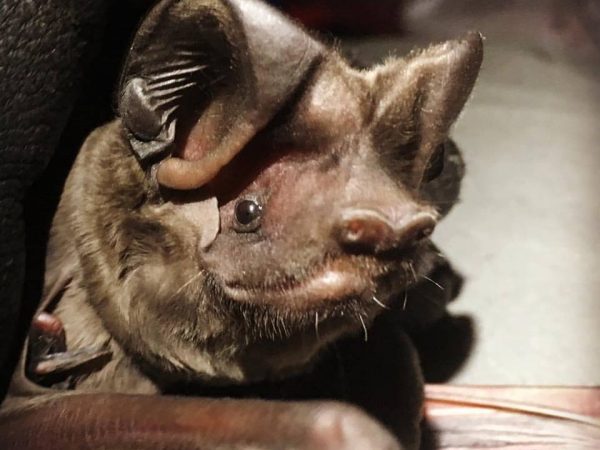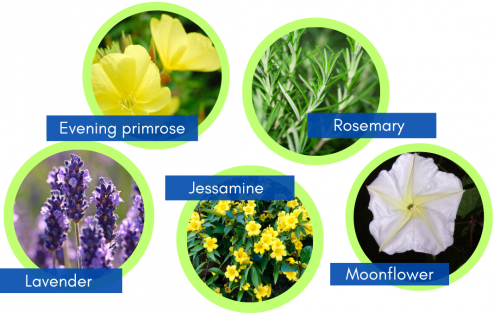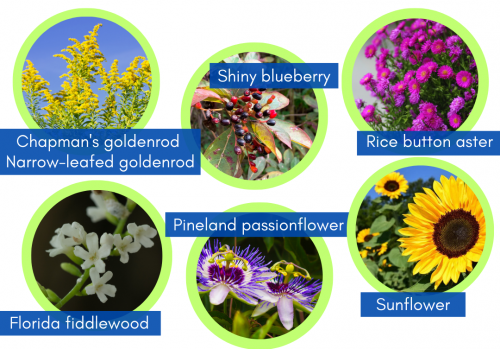Did you know that one species of bat is the fastest mammal on the planet? The Brazilian, also known as the Mexican, free-tailed bat can fly up to 100 miles per hour with just wing power!
This species is one of the 13 bat species native to Florida, including the endemic and critically endangered Florida bonneted bat.
Keep reading to learn more about how this often-misunderstood animal helps you and your garden, and how you can help in return!
What Kinds of Bats Are Found in Florida?
The 13 native bat species found in Florida include 10 in the Vespertillionidae family and 3 in the Molossidae family, otherwise known as free-tailed bats. There are also at least 7 non-native species of bats that have been documented in Florida, some of which are migratory.
| Vespertillionidae | Molossidae (“Free-tailed Bats”) |
|
|
Two of Florida’s bat species, the gray bat and the Florida bonneted bat, are endangered.
The Gray bat roosts in cave systems and is therefore found in limestone karst landscapes distributed across the southeastern and midwestern U.S. In Florida, they are only found in a small area of the Panhandle. This species is most threatened by human disturbance of their caves.

The Florida bonneted bat has a much more restricted range. It is endemic to South Florida, meaning it is not found anywhere else in the world. With an estimated population of as little as 1,000 individuals, these bats are listed as critically endangered on the International Union for Conservation of Nature Red List. Unlike the gray bat, the bonneted bat has been documented using manmade bat houses— we will talk more about how, where, and why to install a bat house below!
Reasons Why Bats are Super Cool and Helpful
1. Bats are Pollinators!
You may know that butterflies and bees are prolific pollinators, but did you know that bats are too? Over 500 species of plants around the world depend on bat pollination, including cacao, mango, banana, agave, and guava.
All of the bats native to Florida are insectivores, meaning they primarily eat insects like mosquitoes, moths, and beetles. But there are some bats that feed on nectar and fruit, spreading the pollen and seeds for a variety of plants. These bats are more commonly found in tropical and desert climates, including in South Florida on occasion.
Research indicates that insect-eating bats may actually be more efficient pollinators than nectar-eating bats in some cases! Bats feeding on insects inhabiting flowers could inadvertently spread pollen in the process.
2. They Eat A LOT of Insects.
Bats can eat their body weight in insects in just one night, meaning they could be eating thousands of mosquitoes and other pests that ravage crops and gardens.
This is good news for farmers, home gardeners, and people who just enjoy time outside!
In the U.S. alone, bats are estimated to save farmers upwards of $3.7 billion a year in pest control costs.
3. Bats Provide Natural Fertilizer.
Bat poop, known as “guano,” is one of the best natural fertilizers out there. Bat guano is rich in nutrients, typically containing about 10% nitrogen, 3% phosphorus, and 1% potassium. In addition to improving the bulk density and water retention of the soil, bat guano also acts as a natural fungicide and nematode control.
You can use bat guano in your gardens when planting, or during active growth to promote healthy plant development. You can also use it in your compost piles to aid with decomposition.
While the respiratory disease histoplasmosis can be caused by a fungus associated with guano, no cases in Florida have been reported as a result of bat guano in a building. As a precaution, use bat guano as fertilizer for your outdoor plants and garden rather than for indoor plants.
Create Your Own Bat Habitat!
You can create a bat habitat in your own backyard by making sure the three main resources are available: shelter, food, and water.
By attracting bats into your yard, you can help control pests, get free fertilizer, and provide a home for animals with a quickly shrinking natural habitat.
If you live in the endangered bonneted bat’s range in South Florida, creating a bat habitat could make a big difference for the small population.
1. Shelter
Install a bat house!
Find templates and tutorials online if you want to make your bat house from scratch. There are also options for bat house kits and pre-made bat houses.
The Lubee Bat Conservatory based in Gainesville, Florida offers a variety of bat house styles, as well as site recommendation and installation services.
You can also make your yard more bat-friendly by keeping snags (dead trees) up as long as they don’t pose a safety hazard. Snags are among bats’ favorite places to roost, as they provide plenty of cozy nooks and crannies.
Keep these in mind when building, purchasing, or installing a bat house:
- Keep it high up! Make sure that the bat house is at least 10 feet off the ground, with a preferred height of 12-20 feet. Bat houses can be installed on free-standing poles or underneath the eaves of the house. Avoid installing houses in trees, as branches can create obstacles for the bats and create access for predators.
- Find a sunny spot. Place the bat house in a well-lit area that gets at least 6 hours of sunlight a day. Bats need warm spaces to roost, so shaded areas may be too cool.
- Opt for larger boxes! While this is not always necessary, larger structures may be more likely to attract bat colonies to your yard.
- Be strategic. Install the bat house before the month of April to maximize the likelihood of roosting, since the official maternity season for bats in Florida is from April 15 to August 15. It is also important to note that during the maternity season, it is illegal to exclude or remove bats from buildings. Any unwanted bats in your home may relocate to a bat house outdoors if you install it before this period.
- Maintain your bat house! Wait until the winter season (when bats aren’t present) to inspect and maintain your bat house. Any gaps or seams should be filled with caulking to keep the house well-insulated. Shine a light around the interior of the house to check for any wasp nests— while wasps are not aggressive towards bats, they can easily crowd out resident bats. Clear out any nests that you find with a stick– remember to not use any chemicals, as they can harm the bats.
2. Food
The best way to attract insect-loving bats to your backyard in Florida is to plant a garden with native plants. A flourishing garden will inevitably invite insects– which will in turn invite bats as well! If you love to grow flowers and vegetables, you may find that a resident bat colony will help to mitigate the pests, both by eating them and through their cleansing guano.
Most of Florida is home to insectivore bats, so certain blooms will attract moths and other bugs that they will feast upon. Try planting:

If you live within the endangered Florida bonneted bat’s range in South Florida, plant your garden with them in mind and attract their favorite insects with:

You can also consider planting a “Moonlight Garden,” which has flowers that bloom in the evening and nighttime. Night-blooming flora is particularly attractive to nectar-feeding bats that may frequent areas in South Florida and other states with either tropical or desert climates, such as Texas, Arizona, and New Mexico. In these cases, opt for light-colored, silvery, or fragrant flowers that bats will like. For nectar-feeding bats, consider the Century plant (also known as the American aloe), powder puff plants, or organ pipe cactus.
While a blossoming garden is good for attracting bats, you always want to make sure that you keep it, and your yard, pesticide-free. Pesticides have been shown to cause long-term harm to bats.
3. Water
Bats can lose up to 50% of their body weight in water in one day!
Try to install your bat house no more than a quarter of a mile away from a water source, such as a creek or pond. If your house is not within this distance, you can consider adding a water feature to your backyard.
Bats drink water mid-flight in a “swoop” motion and need a water source that is long and unobstructed. Because of this, a small basin of water, like a bird bath, is usually insufficient for bats. Backyard ponds or troughs could be good alternative sources of hydration.
If you are planning on creating a backyard water feature for bats, it is important to incorporate accessible “escape routes” in order to protect bats from potentially drowning. Ramps fixed to water troughs can allow bats to exit safely.
What’s Next?
If you decide to create a bat habitat in your backyard, try to be patient! Sometimes it can take months, or even over a year, for bats to establish themselves in your bat house. If you don’t see any signs of bat habitation within a year, try relocating the house or reevaluating what sorts of plants and water sources you have available!
It is worth the wait and the work– seeing your first backyard bats appear can be very rewarding. Encourage your neighbors and people in your community to take steps to create bat habitats as well!
If you want to see what it looks like for bats to emerge at dusk, you can visit the UF Bat Houses on Museum Road, across the street from Lake Alice. These buildings are home to hundreds of thousands of bats, making them the world’s largest occupied bat houses. Learn more about these bat houses here.
Information from Audubon International, Florida Museum, Lubee Bat Conservatory, Science Daily, FWC, National Wildlife Federation, Bat Conservation International, Zoo Miami, USGS, Pond Informer, Florida Bats, and Bat Conservation and Management.